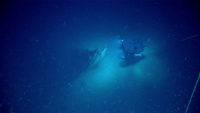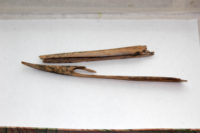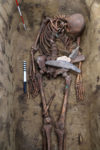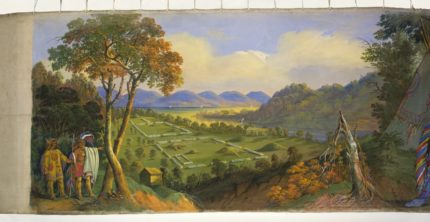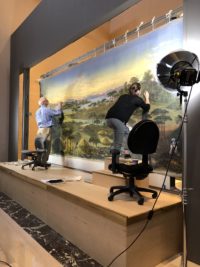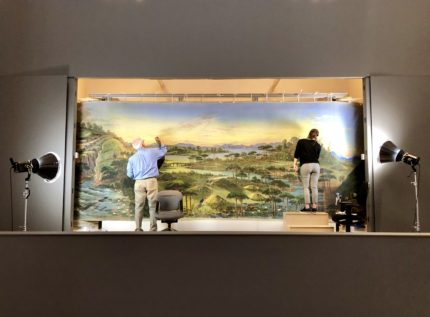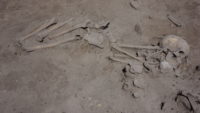 Archaeologists excavating the prehistoric settlement of Slatina in Bulgaria’s capital Sofia have discovered an extremely rare early Neolithic grave. It is about 7,600 years old and contains the skeleton of an adult woman believed to have been buried with her child. She was placed in fetal position and interred with her baby in her arms next to a house on the periphery of the settlement.
Archaeologists excavating the prehistoric settlement of Slatina in Bulgaria’s capital Sofia have discovered an extremely rare early Neolithic grave. It is about 7,600 years old and contains the skeleton of an adult woman believed to have been buried with her child. She was placed in fetal position and interred with her baby in her arms next to a house on the periphery of the settlement.
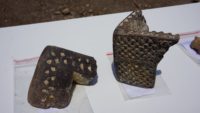 Discovered by construction workers in 1950, Sofia’s Slatina Neolithic Settlement was first excavated in 1958 and was dated to the 3rd millennium B.C. Unfortunately the urban sprawl of Sofia in the 1970s destroyed much of the settlement, reducing a site originally estimated cover 20 acres to a tenth of its size. Later excavations, which have been ongoing since 1985, extended the timeline of habitation significantly. In fact its earliest layers date to around 6000 B.C., the Early Neolithic when the first farmers and livestock breeders settled in Buglaria.
Discovered by construction workers in 1950, Sofia’s Slatina Neolithic Settlement was first excavated in 1958 and was dated to the 3rd millennium B.C. Unfortunately the urban sprawl of Sofia in the 1970s destroyed much of the settlement, reducing a site originally estimated cover 20 acres to a tenth of its size. Later excavations, which have been ongoing since 1985, extended the timeline of habitation significantly. In fact its earliest layers date to around 6000 B.C., the Early Neolithic when the first farmers and livestock breeders settled in Buglaria.
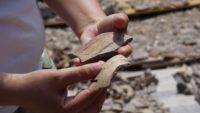 Two phases of Early Neolithic development have been identified from the pottery at the settlement. The first, named the Slatina phase, featured pottery vessels with white decorations. The second, the Kremikovtsi phase, featured pottery with red, brown and burgundy decorations. One home had pottery remains from both phases, used to create six layers of flooring alternating crushed pottery with a thick coating of clay.
Two phases of Early Neolithic development have been identified from the pottery at the settlement. The first, named the Slatina phase, featured pottery vessels with white decorations. The second, the Kremikovtsi phase, featured pottery with red, brown and burgundy decorations. One home had pottery remains from both phases, used to create six layers of flooring alternating crushed pottery with a thick coating of clay.
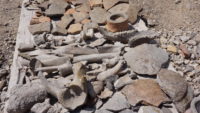 Most of the finds have been dwellings and household items. The houses vary in size enormously. One of the larger homes has an area of more than 3200 square feet; another 1600 square feet; one of the smaller ones just over 100. Made of wattle and daub with wooden posts supporting the walls, these are the largest known homes from the Early Neolithic.
Most of the finds have been dwellings and household items. The houses vary in size enormously. One of the larger homes has an area of more than 3200 square feet; another 1600 square feet; one of the smaller ones just over 100. Made of wattle and daub with wooden posts supporting the walls, these are the largest known homes from the Early Neolithic.
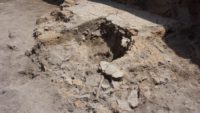 The latest excavation has unearthed numerous implements used in daily life — a bone spoon, pottery vessels, a stamp — and in religious rituals — sections of sacrificial altars. Working tools like kilns and millstones have also been found and archaeologists have been able to gather a great deal of information about how the Neolithic settlers of Slatina lived.
The latest excavation has unearthed numerous implements used in daily life — a bone spoon, pottery vessels, a stamp — and in religious rituals — sections of sacrificial altars. Working tools like kilns and millstones have also been found and archaeologists have been able to gather a great deal of information about how the Neolithic settlers of Slatina lived.
There is very little information, on the other hand, about how they died and were buried.
“The upcoming research [of the 7,600-year-old grave] is going to provide information about the physical features of the people who in today’s Bulgaria gave the start of the first European civilization,” the Bulgarian Academy of Sciences says.
